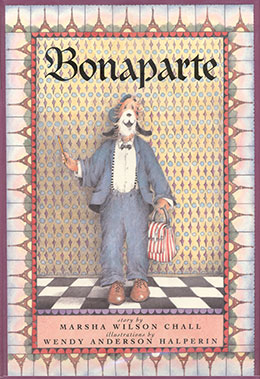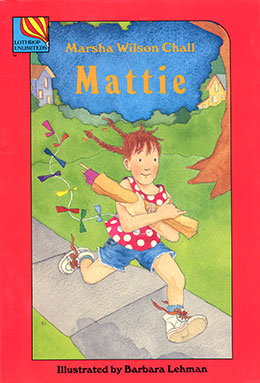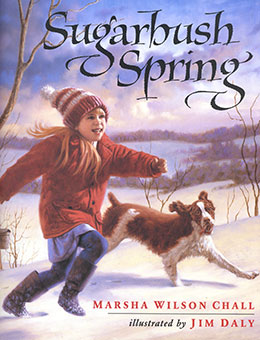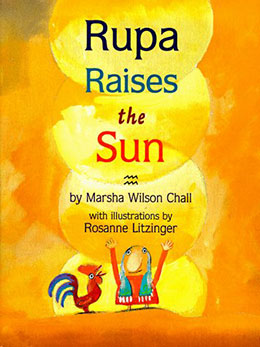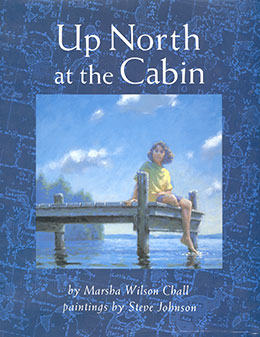Interview
How has personal experience influenced the writing of each of your books?
All writing is filtered in some way through a writer’s life experience, so every story has a story and a person behind it. I wrote One Pup’s Up (2010) and Pick a Pup (2011) in anticipation of adopting a puppy, something I’d never had the privilege to do until then. I’ve loved and lived with some great dogs and the tradition continues with the newest addition to our family, a pup named Scout. She picked us as much as we picked her!
Of course I’d already written a fairy tale about a French dog in a book named after him, Bonaparte, long before Scout’s arrival. My father’s majestic dog, Hank, inspired me to write a story about an intelligent, talking dog (I think dogs do talk—we just don’t have smart enough ears); and my son Robbie begged me to write about a boy, for once already. So I did and showed the best part of a dog’s love for his boy and a boy’s loyalty to his dog. C’est bon.
Sometimes I’ll hear a story that ignites my imagination, like one about a gypsy wedding in Spain’s Andalusian Mountains. I was enchanted by the exotic setting and description of the ceremony so much that I read about the gypsy culture for many months. What I eventually wrote had nothing to do with a wedding, but about the privileges and burdens of power. If a woman believed she raised the sun and needed a vacation, what might happen? The gypsy story sparked Rupa Raises the Sun, but what kept it burning was a need to resolve my own life at the time. I discovered through writing this tale that I, like Rupa, could take a day off now and again and the sun would also rise.
In my chapter book, Mattie, imagination and experience combined to create a spirited second-grade character who, like me, loved school and friends but thought boys belonged on Pluto. An author’s best revenge is to live life twice, so I invented the little brother I never had named Emmett, whom Mattie sells; and a classmate named Jeb who, through (bad) luck of the draw, becomes Mattie’s Valentine.
A strong connection to place, the land beneath my feet, feeds me spiritually and is often expressed in my work. Though fictionalized, the roots of four of my picture books run deep in their respective settings. Up North at the Cabin depicts my own and my family’s unguarded affection for the cabin get-away experience, a change of place, pace, and attitude. My adult daughter Lindsay relives her childhood each Memorial Day as she water skis an icy-cold Leech Lake. Generations of my family have vacationed and celebrated holidays on northern lakes, especially the the biggest day of summer, the Fourth of July. In Happy Birthday, America! I recorded these large family gatherings doing my best to name every relative (and to spell those 37 names correctly, which I did with one noticed exception). In homage to a family tradition of sugaring with friends in northern Minnesota, I wrote Sugarbush Spring. This annual ritual signaled not only a natural clock, but also the dependability of nature’s gifts in the delicious form of maple syrup. The onset of winter on the prairie is portrayed in Prairie Train, the story of a girl’s first solo journey to visit Grandma in the big city. Her glamorous ride on the grand Great Northern 1924 Oriental Limited is soon derailed by a formidable blizzard. Her confidence shaken, fear seeps in, as icy and gripping as the screaming prairie wind. I was never stranded on a snowbound train, but my grandmother was. I imposed my own love of train travel (a little later than 1924, however!) with her experience to create this rite-of-passage story. A new book, A Secret Keeps (2012), is set on my family’s farmstead.
Tell us a little bit about your writing process and the development of your books.
I used to write the first drafts in longhand, but I am becoming more fluent on the computer. I can type faster than I can write for one thing. But ideas still germinate on scraps of paper and grow or die in notebooks or folders. Sometimes it’s slow labor, complete with false starts, shallow breathing, and the confirmed belief that someone else should do this. Rupa Raises the Sun, for example, was drafted, revised, overhauled, trashed, and resurrected several times over a course of seven years. But when I know the full arc of the story (I wish that occurred reliably), it can deliver itself. Up North at the Cabin showed up one day after a few months gestation. Of course it was spanking new and required many drafts plus some unusual research. My editor questioned whether the lake named in the book was known as Lake Mille Lacs or Mille Lacs Lake. I canvassed about 50 tourists around Minnesota’s second largest lake to hear what they called it—Lake Mille Lacs or Mille Lacs Lake. Most took the easy way out and dubbed it “Mille Lacs.” But I needed “Lake” for the extra beat, and discovered that the over-thirty set to which I belonged said Lake Mille Lacs; the younger crowd reversed it. I aligned with my peers in that decision. In researching Sugarbush Spring, I learned from the president of the Minnesota Maple Syrup Producers Association that the area surrounding Lake Mille Lacs supports the sweetest maple trees in the state. Perhaps that influences their dispositions, too, but “sweet” meant sugar content in that context. And if that isn’t fascinating enough, consider my research to unearth one of the two remaining Class P‑2/482 “Mountain” type steam engines for Prairie Train in Willmar, Minnesota at the Kandiyohi Museum. There, the curator and I were able to color-copy old Great Northern Calendar engines to show the peculiar shade of green engine paint the illustrator could not find in East Coast museums and libraries.
I’ve been meeting at least monthly with my regular writers’ group or “littermates” (we clawed and squirmed our way into the writing world together) since 1987. I’m also very fortunate to be a part of semiannual writers’ retreats with other children’s authors. I wouldn’t have persisted with some of my stories without their strong and able support.
When did you start writing?
I’ve always written. As a child I kept diaries, wrote plays and puppet shows, and summertime neighborhood newspapers (“Chuckie’s Tonsils Out at Last!”). When my mother discovered my adolescent poetry and wondered if we should see a psychologist, I realized that writing too close to the bone could be trouble. In college, I raptly read the writings of a lot of dead guys—you know the ones—and allowed my only creative writing instructor to submit my story, “The Spines,” (I’m still embarrassed) to the campus literary contest, which I grudgingly won and all I could say was “go figure.” That was one weird story, and if that’s what inspired praise, I only wanted to do laundry the rest of my life. I recall an appearance by Rod Serling of Twilight Zone fame and the writing awards ceremony that spring as nearly the same event. Besides, when I mentioned to my parents that the English Department recommended graduate study out East, they changed the subject.
Being a “writer” scared me. The stakes seemed too high, or maybe too low—drunkenness, debauchery, being dead. I faced my own mortality when my mother died and read C.S. Lewis and Auden for consolation, but found little relief. Where I did find it was through the urgent rediscovery of a very mortal, concrete world, the same one I’d always explored with my children, but now through a new filter. What if this were the last time I’d ever see a tulip? Or what if this were the first time? Eudora Welty said that “children, like animals, use all their senses to discover the world. Then artists come along and discover it the same way, all over again.” So I wrote to interpret and preserve experience—to capture it so it could never be lost.
A friend recently reminded me of the axiom that work should be play with a purpose. Writing to me is that kind of work; like play, I lose track of time, in the same miraculous way I did as a child in the backyard creating miniature worlds that slipped imperceptibly into nightfall.
Why do you write for children?
I was awakened to children’s literature by reading picture books with my kids. The lush illustrations and poetic language appealed to me. I took one class, then another, and studied craft in workshops for two years. I learned to relish children’s fresh, concrete, unself-conscious discoveries of the world. Writing for children allowed me that joy of experiencing the world over and over again for the first time. Adults lose this childlike appreciation through over-complication. I like to make the complex simple. Not simple-minded, but pared down to the essential. Walter de la Mare said “Only the rarest kind of best in anything is good enough for the young.” And I’d say that children are the best kind of people we have to offer. Like the pediatrician, I’m working with fresh material, not the damage of a lifetime’s wear and complications. It’s great work if you can get it.
Talk about teaching …
I’ve been fortunate to receive the scholarship and encouragement of so many fine writers and now contribute my support through school and library visits, young writers’ workshops, and student mentorship in Hamline University’s MFA program in Writing for Children and Young Adults as well as private workshops. I love interacting with readers and writers of all ages. In fact, it’s not an exaggeration to say that books have brought the world to my door. Though I’ve not traveled extensively, I’ve discovered many lands through books and from the opportunity to teach international students and to read to them in adult literacy classes. Teaching critical and creative writing for children’s writers at the college level has given me that rare chance to study children’s literature and the writer’s craft so that I learn what I know and how it’s of value. Teaching teaches the student and the teacher. Plato said that she who dares to teach must never cease to learn. I learn something about the way stories work every time I read, teach, or write one.


